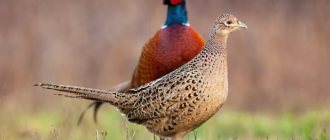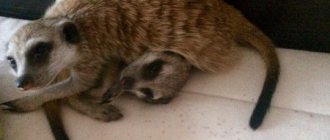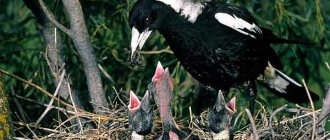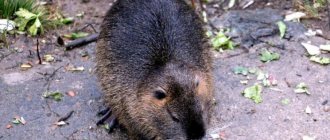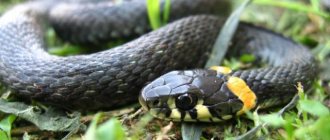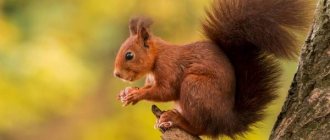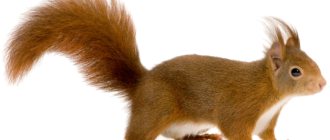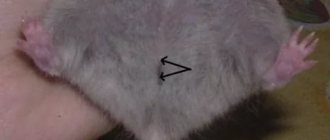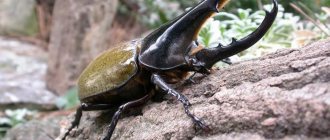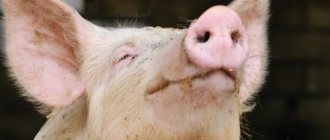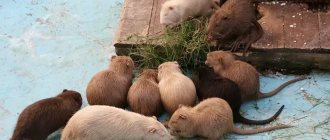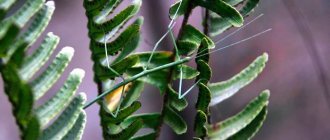Today it is fashionable to have some unusual, exotic animals as pets. People treat the search for an animal much more closely and carefully than, for example, choosing a car. No one can be surprised by a rare breed of dog, a raccoon or a creeping amphibian. So, one of the unusual animals as a pet is the otter. She captivates with her touching appearance, mobility and gives the impression of a restless, cheerful person. What could such a desired acquisition turn out to be for your house or apartment? You should familiarize yourself with the features and nuances of keeping it at home.
Origin
Many historical chronicles of Northern Europe claim that in the Middle Ages, otters were raised for their valuable fur, and were also often tamed as pets. However, the species received its official name in 1758. According to the classification of the animal world, otters belong to mammalian predators and form a separate category in the mustelidae family.
Did you know? In Bangladesh, otters are kept as game animals: they help drive schools of fish into nets.
Almost everywhere the animals are listed in the Red Books due to the rapid decline in the population.
There are several reasons for this phenomenon:
- active hunting for animal fur;
- rather slow reproduction;
- bad ecology.
the main problem
If you were able to provide your pet with decent living conditions, do not think that all the difficulties are over. Please note that otters have very smelly droppings. Their stomach is designed in such a way that they defecate more often than cats and dogs. Moreover, their feces are always semi-liquid.
Experts say that otters can be trained to use a litter tray. But even if you come across such a smart animal, you will not be able to get rid of the unpleasant smell in the house. Yes, and you will have to change the filler several times a day.
Otters have a pungent smell not only of their feces, but also of the secretion they use to mark their territory. Be prepared for this.
Habitats
Today, these otters can be found throughout Eurasia (with the exception of the Arabian Peninsula and the polar regions), North Africa, and parts of North America.
The animal prefers to settle:
- near forest rivers;
- less often on ponds and lakes;
- on the seashore (we are talking about the sea otter, a marine subspecies).
The future place of residence is selected depending on the amount of food: fish, crayfish, frogs, small rodents.
They live in deep burrows, which they dig in wormwood or near ice-free rapids, and the entrances to them are carefully masked with branches, leaves, and roots. Inside the spacious chamber, a flooring is usually made of grass and dry leaves, and air enters here through narrow ventilation passages. Often, a cautious animal makes an emergency exit through which you can quickly find yourself on a dry shore. Caring about the safety of its home, the animal will never appear from the water next to it - first it will swim several meters to the side.
Did you know? In summer, the otter has a wide choice of food, but in winter the animal has a hard time: during the hungry months, the animal is able to cover distances of up to 20 km per day in search of food.
Nutrition
In nature, these animals eat live fish. This is the kind of food that should be given to an otter in captivity. Gutted and frozen fish are not suitable for her, because she must also consume the food that her victims ate. True, otter sellers recommend feeding them raw meat, shellfish, vegetables, eggs, and mineral supplements.
Animals must eat at least 1 kg of food per day.
Description of species and their characteristic features
Today, two types are considered the most famous:
- river otter (ash tree). This animal has a rather long (55-95 cm) and flexible body weighing from 6 to 12 kg. It has a rather large tail (30-50 cm), wide at the base, with the help of which the animal leads a semi-aquatic lifestyle. This species runs and swims equally well. The color of the skin is light silver on the belly and dark brown on the rest of the body. Fur is the only salvation from the cold, because animals have almost no fat layer. Their eyes have special valves that protect them from water. On average, the animal is capable of diving to a depth of 300 meters for 3-4 minutes. River otters are solitary by nature, so they settle at a considerable distance from each other;
- Asian or clawless otter. The smallest (up to 60 cm) representative of the family with a slightly elongated body and short legs. Her round eyes make her look pretty, and her small ears have special membranes that protect them from water when diving. The color of the eastern species is heterogeneous, a dark brown tone predominates, only the “collar” and cheeks have a creamy tint. These beauties live in small colonies in mangrove and freshwater swamps of China, India, the Philippines, and Indonesia. If they are not busy searching for food, then their games are very interesting to watch: they chase each other and fool around. And on a fine day you can see the animals sunbathing on boulders heated by the sun. The second name of this species - clawless - accurately reflects their peculiarity: the animals do not have claws, they build holes for themselves only in soft soil or take root in abandoned burrows. The way they feed also differs: the animal probes the swampy soil in search of mollusks, snails, frogs, and carefully cleans the caught prey before consumption.
Did you know? In winter, otters move down snowy slopes quite funny: they slide down them on their bellies.
Breeding otters
This usually happens when animals reach the age of 2-3 years. Otters mate in March-April. But in warm climates they can do this almost all year round. Interestingly, otter pregnancy consists of two stages. The first is approximately 270 days, called latent. And the otter carries babies for 2 months. At one time she can bring from one to 4 cubs. They are born blind, deaf, without teeth, covered with fluff.
At the age of 1 month they begin to see, acquire teeth, and at 5 weeks they begin to molt. They need to be brushed periodically to form stronger fur. Up to nine weeks, babies feed on mother's milk. They become independent only at six months. They can be separated from their mother only at one year of age.
Tame otters are very affectionate. © english.kyodonews
Keeping at home
Caring for otters has many features, without which it is difficult to provide a comfortable life for a nimble pet. Let's try to understand the most important points.
Find out how difficult it is to keep a mink at home.
Nutrition and feeding process
It is unlikely that you will be able to find ready-made food for these pets in a pet store, so you will have to create the diet yourself. To do this, you just need to know that:
- the animal eats 0.8-1 kg of food per day;
- meat is selected from low-fat varieties: chicken, rabbit, veal, etc.;
- It is advisable to take predatory and herbivorous fish in equal measure;
- for variety, pets are also fed frogs, milk, mice, eggs;
- Vitamin supplements are required for these animals. Give them children's multivitamins, calcium, phosphorus. It also wouldn’t hurt to throw a few pieces of chalk into the enclosure or crumble eggshells into the food;
- Pregnant individuals require more nutrition and an increased intake of vitamins.
Important! 50-80% of the daily diet should be meat and 10-30 - fish.
Conditions of detention
It’s sad, but otters are absolutely not suitable for living in an apartment. This is all because of their sharp, extremely unpleasant loose stools, which occurs due to eating fish. Therefore, it is better to keep your pet in an enclosure on the territory of a private house.
Exoticism has become popular, so pet lovers often get animals such as: jumper, kea parrot, mini-pig, raccoon, newt, capybara, jungle cat, manul, monkey, possum, nose, jaguarundi, fennec fox, Tasmanian devil, sand cat and Temminka cat.
The following rules will help ensure your animal’s comfort:
- The optimal size of the enclosure is 8x16 meters. It is usually made in the form of a cube made of metal mesh, with the bottom covered with a 10-15 cm layer of gravel and river sand;
- Since the otter is a semi-aquatic creature, it is impossible to do without a pool. Its minimum parameters are 1x2 m, but it is better when the ratio of land and water in the enclosure is 2:1;
- Set up a drying area for your pet near the pool. To do this, you will need a box with sand, sawdust, peat and any other natural absorbent materials. The animal will really like to lie there after bathing, drying its fur, so choose a larger container;
- The last but not least element is the mink. A house for an animal must have two “rooms” - a chamber-hallway (30 centimeters in length) and a spacious living space (50x40 cm). It wouldn’t hurt to cover the entrance with a sponge, which will help get rid of excess moisture. For easy cleaning of the house, make sure it has a lifting roof. But it must be heavy so that the animal cannot lift it. Cover the floor in the house with hay for insulation.
Pet care
If you meet the basic requirements for arranging a home for an otter, then further caring for it will not be difficult:
- feed the animal regularly;
- make sure that the water in his pool does not turn into a swamp;
- Spend time periodically playing with your pet;
- There is no need to bathe the otter additionally; it can handle this on its own if there is a pool;
- Remember to take calcium supplements, otherwise problems with claws and teeth cannot be avoided.
Think carefully before getting poisonous animals such as scolopendra, salamander, tarantula, black widow and tarantula.
Character and lifestyle
Under natural conditions, the otter is a predator that attacks prey from ambush. The river species prefers to hide in a hole during the daytime or walk in places where no one will disturb it. It happens that in the fall, when young animals are taken out to hunt, otters organize a collective fish drive, but generally representatives of the species try to keep to themselves.
Despite its small size, the otter has strong paws, a flexible body and strong claws, so it will not hurt its enemies. For the same reason, you should play with the animal carefully, otherwise injuries cannot be avoided. And otters love games very much, because they have an extremely playful character.
Important! If there is no pool in the enclosure where you can run around in the water all day, splashing out energy, then the animal will quickly wither away.
Health and diseases
Otters are naturally hardy, so they rarely get sick. Contact with other infected animals can cause the disease. To avoid this, regular vaccinations are necessary against:
- viral infections (primarily from plague);
- gastroenteritis;
- viral hepatitis;
- botulism.
Dog preparations are ideal for vaccinating otters. The average lifespan of an animal in captivity is 15 years, but specimens older than 10 years are rarely found in the wild.
Possible problems
At first, it is advisable to observe the animal after eating: nature has endowed otters with such a complex diet that it is difficult to fully recreate it in artificial conditions. For example, after eating cleaned or large fish, the animal’s health may worsen. The thing is that in nature, otters eat small fish whole, with the remains of food in their stomach. Such nutrition makes up a significant proportion of the animal’s mineral and vitamin complex.
Increasingly, the following animals are chosen as pets: lemurs, marmosets, capuchins, monkeys, squirrels, mongooses, lemurs and jerboas.
Therefore, by cleaning the fish, you will deprive the animal of nutrients. As for large species of fish, not all of them are well digested by the otter.
If you plan to breed pets in the future, then get ready for a long and labor-intensive process. For this purpose, individuals older than two years are suitable; it is better to keep them in separate enclosures and only move them together for the mating period (1-1.5 months). Did you know? The pulse of otters reacts to the animal’s environment: on land it is about 250-300 beats per minute, while in water it drops to 60 beats.
Behavior
Otter owners write that the animals are very cute. They have thick and beautiful fur, funny faces, and smart little eyes. Animals love to frolic in the water. After water procedures, they must dry out. To do this, you need to build a house near the pond, filled with sawdust or dry leaves. They need another house as a hole where they will sleep. It must be made two-chamber. In the wild, otter burrows are very deep. The animals spend most of their time in the water, but rest on the shore. Their burrows are always clean and warm. Even in high water they are not flooded with water.
Otters must live in a group of their relatives. Loneliness is harmful to their health. If you take this animal into your home, get ready to pay a lot of attention to it. If the otters don’t like something, they will begin to protest quite violently. Damaged furniture is not all they are capable of.
American husband Mika Newton: how the singer, who emigrated to the USA, lives now
Seedlings from old seeds: chamomile tea will “wake everyone up”
The man thought he got a mini-pig: the pet “did not meet” his expectations
Otters protect their territory very jealously. They may consider your guests their enemies. In this case, the animals begin to bite painfully.
Purchasing an animal and price
Buying such a pet is problematic. Firstly, this is an expensive pleasure: the average price for a river otter is from $900 to $4,000, but an Asian one will cost more - from $2,800. Secondly, if you find a suitable option, then carefully check the documents: today there are often cases of paper forgery - poachers catch wild otters and then sell them using false documents.
The results of such transactions are sad:
- wild animals do not take root well in captivity;
- Sometimes infected specimens are found.
The otter is a beautiful, graceful animal whose play is interesting to watch from the outside. However, keeping these animals at home is associated with various difficulties, so before getting such a pet, you should think carefully. The future owner must understand the full responsibility of this step, otherwise the consequences will be unpredictable.
Feeding otters
The majority of their diet consists of fish. Usually for these animals they buy the most inexpensive ones, such as perches. Otters are also sometimes given a bird, Madagascar cockroaches. These animals also happily eat cat granular food. But you need to give it very little and make sure that the otters always have water to drink.
It is interesting to watch how these animals beg for food from the owner when he is cooking. What tricks does the animal go to in this case! He squeaks like a chicken, chirps, and even brings his owner his bowl to hint that it’s time for dinner. Otters have an excellent memory. These animals remember their name and run after their owner, like a dog or cat.
In general, keeping otters is very interesting, although troublesome. After all, for this to happen there must be all the right conditions. First of all, the pool, since these predators need to swim. In addition, they mate in water.
Burrows
An otter needs a hole with at least two rooms to live. The first will play the role of a “hallway”, its length should be about 30 cm, and the second will be the pet’s home itself. Since one of the owner’s tasks is to keep the home clean, it is very desirable to equip the hole with a lifting roof. However, when choosing a model, it is important to choose a strong, stable structure that the animal cannot lift. For the floor of a domestic otter, hay or straw mixed with sawdust is suitable. They retain heat well.
How much does it cost to buy a weasel?
Weasel - breed standard Price: from 10,000 rubles. up to 15,000 rub.
Interesting materials:
What percentage of the total landmass does Russia occupy? What percent of Russia's territory is covered with forests? How much wheat is grown in Russia? How many times in a row did Spartak become the champion of Russia? How many times has Russia become the world champion in hockey? How many Burger King restaurants are there in Russia? How many KFC restaurants are there in Russia? How long was Russia under the Golden Horde? How many children's railways are there in Russia today? How many senators are there in the Russian Federation?
Lifestyle
The otter is a predator that hunts fish while in ambush. She sits, hiding on a stone or snag, and suddenly pounces on a fish swimming by. In the fall, when the young animals grow up, the otters organize a real driven hunt, directing the fish to shallow water and there exterminating them collectively. Even males, who usually stay away from the family during the day, take part in these events.
The common otter usually leads a rather secretive lifestyle. She goes hunting at dusk. Only in places where no one bothers her can she be active during the day.
Rules for ensuring the comfort of the animal
- The acceptable dimensions of the enclosure are 8 by 16 m. It is constructed mainly in the shape of a cube using a metal mesh. A 10-15 centimeter layer of river sand and gravel is poured onto the bottom.
- It is worth taking care of the pool, because the otter is a semi-aquatic creature. The minimum size should be 1 by 2 m, but the best ratio of water to land in the enclosure is 2:1.
- It is worth providing a drying rack for your pet next to the pool. To do this, it is worth preparing a container with sand, peat, sawdust and other natural absorbent raw materials. The otter really likes to lie around after bathing, therefore, you can choose a larger box.
- Mink. For the animal, 2 rooms should be allocated: an entrance hall (up to 30 cm), a free living room (50 by 40 cm). It is advisable to cover the entrance with a sponge so that you can get rid of excess moisture. The floor of the house can be insulated with hay. To make it convenient to clean the animal’s room, you should take care of a lifting roof.
Organization of care
Keeping a pet otter involves performing certain procedures that are not particularly difficult, but it is important that they become a good habit for a responsible owner.
First of all, the animal must be fed regularly, the diet must be selected in accordance with the above recommendations, not overfeeding, but also not allowed to starve. Drinking regime is also important: the otter should always have fresh water in his bowl. In addition, the pet needs the liquid in its pool to remain clean, so the “bath” will have to be cleaned periodically.
Otters are social animals, so the owner should try to spend time with them and play. However, the pet does not need additional hygiene: it “takes a bath” on its own, freeing the owner from such a need.
Security Considerations
Otters can carry and transmit dangerous bacteria such as Salmonella and Streptococcus phocae to you and your other animals.
Otters can also be loud and destructive. They can cause damage to your home and harm other animals in your family.
Dogs and otters don't get along. If you have a dog at home, they may fight with your otter.
Dogs and otters can also transmit diseases to each other. Dogs can infect otters with canine distemper and rabies. Otters can infect dogs with salmonella, just like humans. Otters may bite when threatened and do not make good housemates.
